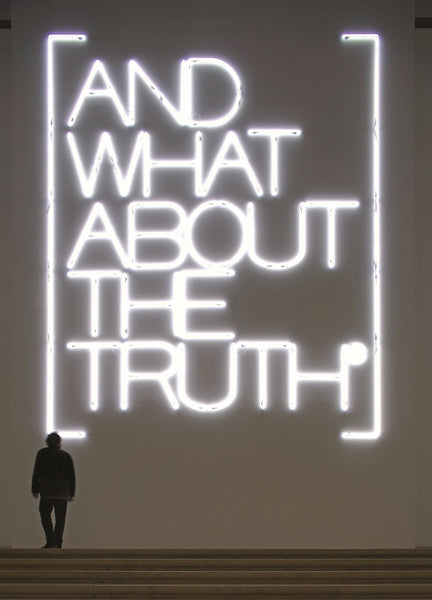
Maurizio Nannucci considers himself above all a conceptual artist. His experience in the field of theater, electronic music and poetry have brought him to position his art on an entirely abstract, minimalistic and indeed conceptual level, though it begins from a strictly visual stimulus, making it hard for many to actually categorize him as such.

As a conceptual artist at heart, his fascination with neon is rooted primarily in the medium’s extraordinary force of expression and, when used to convey text, its ability to get viewers/readers to entirely re-think the relationship between the words and their meaning, which allows him to render his artworks almost entirely independent from aesthetic appearance. He stated: “neon allows me to shape and reshape space into sensations and concepts that come very close to the degree zero of representation, while opening up new perspectives and horizons of perception and interaction with the reality”. The only aesthetic aspect Nannucci does use to enhance what he means to convey is colour and, of course, light.
To Nannucci, “although pure and bare, [neon lights] allow for connections to happen with - as well as activate - other systems such as language and the perception of space”.

His liaison with words and their meaning was born in 1964 when he began creating his Dattilogrammi on an Olivetti typewriter. Already by 1967 he had moved on to neon and since then he has been building his Anthology: an ongoing repertoire of text-based neon works addressing the themes of and the connections between art, society and language. Moving from a piece of paper to a wall meant adding a completely new range of dimensions to his work: both in physical and imagined space, by leveraging on the communicative vigour of neon.

While he initially strongly orientated himself towards semiotics, as the years passed he realized that his interest lay not in creating a fixed meaning, but to create mental spaces: he works on creating “a mental image, a virtual one, an image born from a dream or a dream with eyes wide open, a visualised and relative image, which can be evoked by a single word, a sound, or a scent.”

In 2004 he made an unforgettable appearance in Berlin, with his ‘All Art has been Contemporary’ neon being installed on the façade of the Altes Museum. The parallel between the historic museum’s ancient collection and thought-provoking phrase worked incredibly well and can even be said to have succeeded in clarifying Nannucci’s own art further if one considers his oeuvre in relation to the Ancient Egyptian hieroglyphics’ analogies between text and imagery.